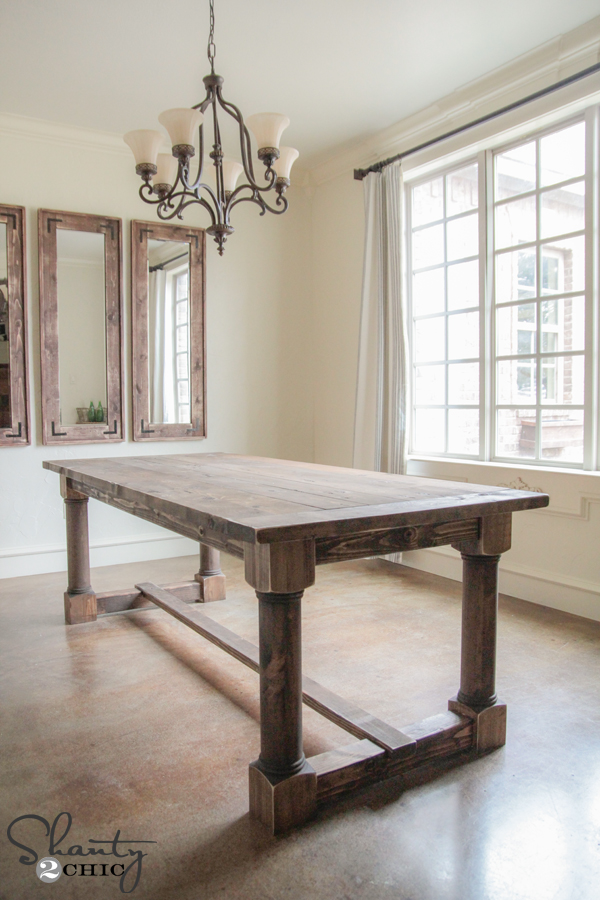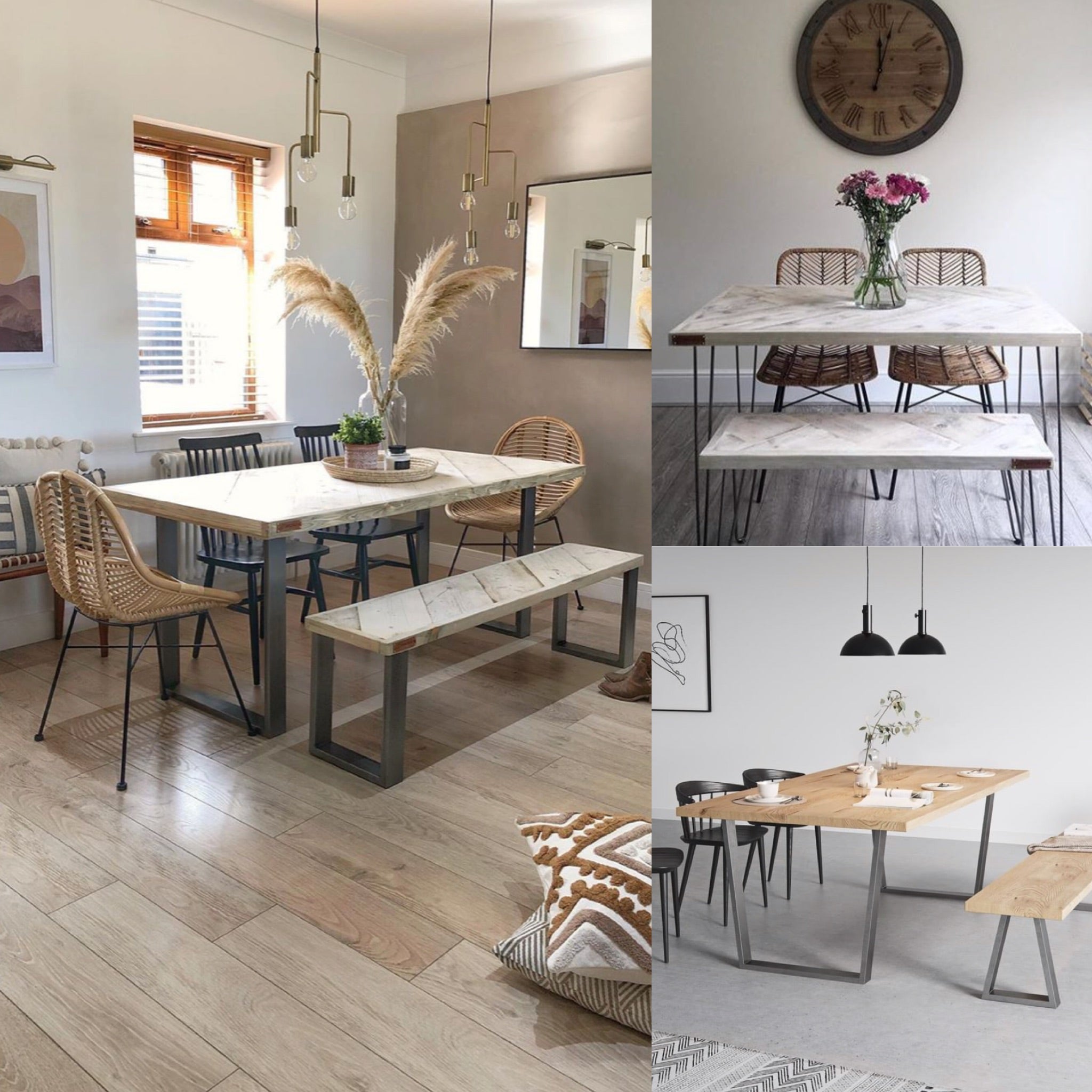Upgrade Your Furniture with Custom Dining Room Table Legs
From Standard to Modern: Find the Perfect Eating Room Table Legs for Your Design
The option of eating room table legs plays a critical duty in specifying the total personality of your area, linking the space between typical workmanship and contemporary looks. While classic layouts such as cabriole and transformed legs evoke a feeling of ageless sophistication, modern styles like barrette and geometric alternatives present a possibility for striking visual passion. Evaluating the right equilibrium in between these styles calls for a nuanced understanding of your existing décor and individual taste. As you think about these components, the question stays: how can you effortlessly incorporate these diverse leg designs to create a harmonious eating experience?
Comprehending Table Leg Styles
The selection of eating area table leg designs can substantially affect both the aesthetic appeals and capability of the area. Each leg design contributes one-of-a-kind aesthetic components and sensible attributes, dealing with diverse design preferences and use requirements. Understanding these styles is critical for selecting the right eating table that straightens with your total interior style vision.
As an example, conical legs supply a tidy, classic appearance that can improve a space's elegance, while stand bases give security and take full advantage of legroom, making them suitable for smaller spaces. Barrette legs, a characteristic of mid-century modern-day layout, introduce an industrial panache, enabling a ventilated, open feel. In a similar way, trestle legs evoke rustic appeal, offering durable support and a feeling of eternity.
Wooden legs can bring warmth and texture, whereas metal alternatives typically share a smooth, contemporary vibe. Inevitably, understanding table leg styles is important for producing a natural dining area that shows personal design while guaranteeing functionality and convenience.
Traditional Table Leg Options
When picking eating space table legs, traditional choices usually embody classic sophistication and craftsmanship. These styles show a rich heritage and a commitment to quality, making them suitable for those who appreciate classic appearances.
Among one of the most renowned standard leg styles is the cabriole leg, defined by its elegant curved form. This layout typically features attractive carvings and is most commonly located in Queen Anne and Chippendale furnishings. One more preferred alternative is the turned leg, which boasts a series of smooth, rounded forms that give a classic appearance while preserving security.
Furthermore, the straight leg, while easy, uses a basic and strong framework that can blend effortlessly with a variety of tabletop designs. For those attracted to ornate describing, claw-and-ball feet legs stimulate a sense of majesty and can serve as a stunning prime focus in any eating area.
Last but not least, stand bases, although not strictly legs, provide a different typical alternative that enables adequate legroom and can be perfectly carved. Each of these typical leg designs adds to the general atmosphere of a dining-room, weding feature with aesthetic charm.

Modern Table Leg Designs
Modern table leg designs use a diverse series of styles that highlight clean lines and cutting-edge materials. These styles often prioritize functionality while acting as striking prime focus within an eating space. Minimalist aesthetics are common, with legs crafted from materials such as steel, glass, and crafted wood, which add to a ventilated and modern feel.
One preferred design is the hairpin leg, defined by its slender, conical structure that offers stability without frustrating the tabletop (dining room table legs). This design is usually found in mid-century contemporary furnishings and can effortlessly enhance different dining table forms. One more fad is the use of geometric forms, where legs may tackle asymmetrical or angular forms, including aesthetic passion and a touch of artistry

Mixing Styles for Special Areas
Typically, home owners seek to develop distinct dining spaces that mirror their personal design by mixing different layout elements. This strategy permits the incorporation of varied aesthetic appeals, resulting in an unified yet distinctive atmosphere. For example, combining a rustic wooden table with streamlined, modern-day steel legs can create a distinctive comparison that raises the area's total appeal.
Additionally, integrating vintage table legs with modern table tops can evoke a sense of history while keeping a modern-day sensibility. Such mixes not just showcase specific taste but additionally encourage imagination, permitting property owners to curate a space that really feels both personal and inviting.
Shade plays an essential function in this mixing process; choosing table legs that match or contrast with the existing shade plan can boost aesthetic rate of interest. As an example, whitewashed legs can soften the daring of a dark table surface area, producing a well balanced visual.
Tips for Selecting the Right Legs
Selecting the right table legs is crucial for attaining both functionality and aesthetic charm in your dining room. Begin by considering the general design of your room. Typical settings take advantage of legs that feature complex makings or transformed designs, while modern areas might call for streamlined, minimal styles.
Following, examine the height and security of the legs. dining room table legs. Typical table vary between 28 to 30 inches in elevation, so make sure he has a good point the legs match this dimension for comfort. Furthermore, durable products, such as wood or steel, can improve security and longevity
Assess the leg form as well-- choices consist of straight, tapered, or stand layouts. Straight legs offer a timeless look, while tapered legs can include a touch of elegance. Pedestal bases give enough legroom and are ideal for smaller sized rooms.
Conclusion
In summary, choosing the ideal eating area table legs calls for mindful factor to consider of both traditional and contemporary styles. Standard choices such as cabriole and turned legs use timeless beauty, while contemporary designs like barrette and geometric shapes offer a modern touch. By integrating leg design, height, and product with the overall design, a cohesive and welcoming atmosphere can be accomplished. Ultimately, the chosen table legs need to reflect the desired visual, boosting the dining experience within the area.
The range of dining room table leg designs can dramatically influence both the visual appeals and capability of the room. Inevitably, recognizing table leg styles is vital for creating a cohesive dining area that shows personal style while making sure usefulness and convenience.One of the most iconic traditional leg designs is the cabriole leg, characterized by its elegant rounded look at here shape. Straight legs supply a classic appearance, while conical legs can add a touch of style.In summary, picking the excellent eating space table legs needs mindful factor to consider of both traditional and modern-day designs.